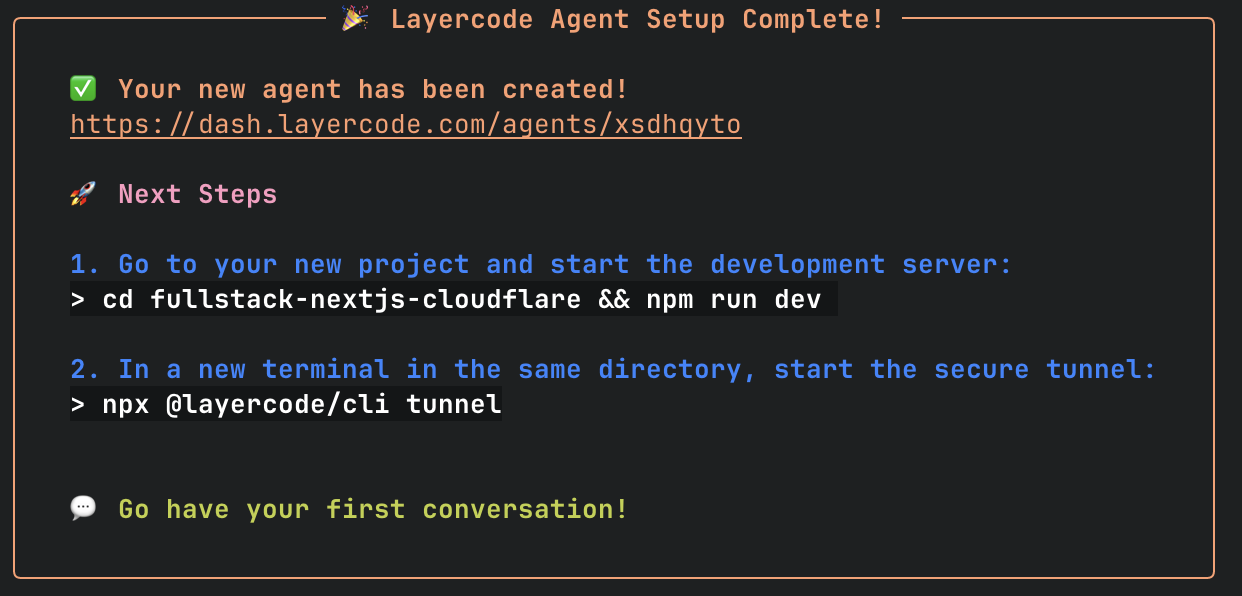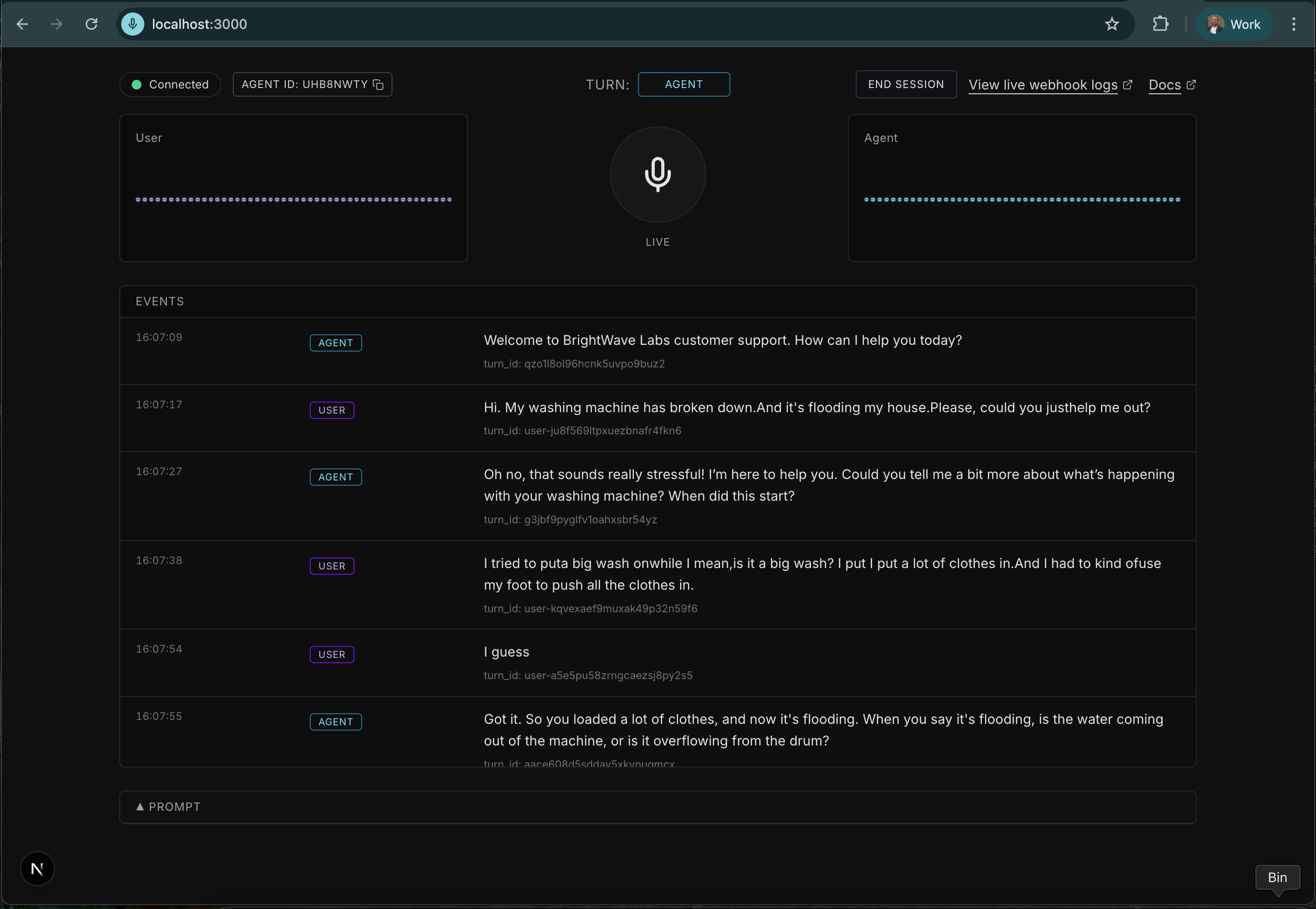- Real-time speech-to-text, text-to-speech, turn-taking, and low-latency audio delivery powered by Layercode’s edge platform.
- A sample agent backend that monitors conversation transcripts and responds based on your prompt and the tool calls you define. Deployable anywhere.
- CLI (recommended for Next.js)
- Manual setup (Next.js)
- Other guides

Try it out
Once everything boots, you can start a conversation locally (typically at http://localhost:3000/).
Video walkthrough
Prefer a walkthrough? Watch the quick demo below.Next steps
Keep iterating—here are the next things builders usually tackle.
Customize your prompts
Adjust theprompt or welcome_message in layercode.config.json.
layercode.config.json
Add a tool call
The project ships with an example tool in/app/api/agent/route.ts. Modify it or add your own.
/app/api/agent/route.ts